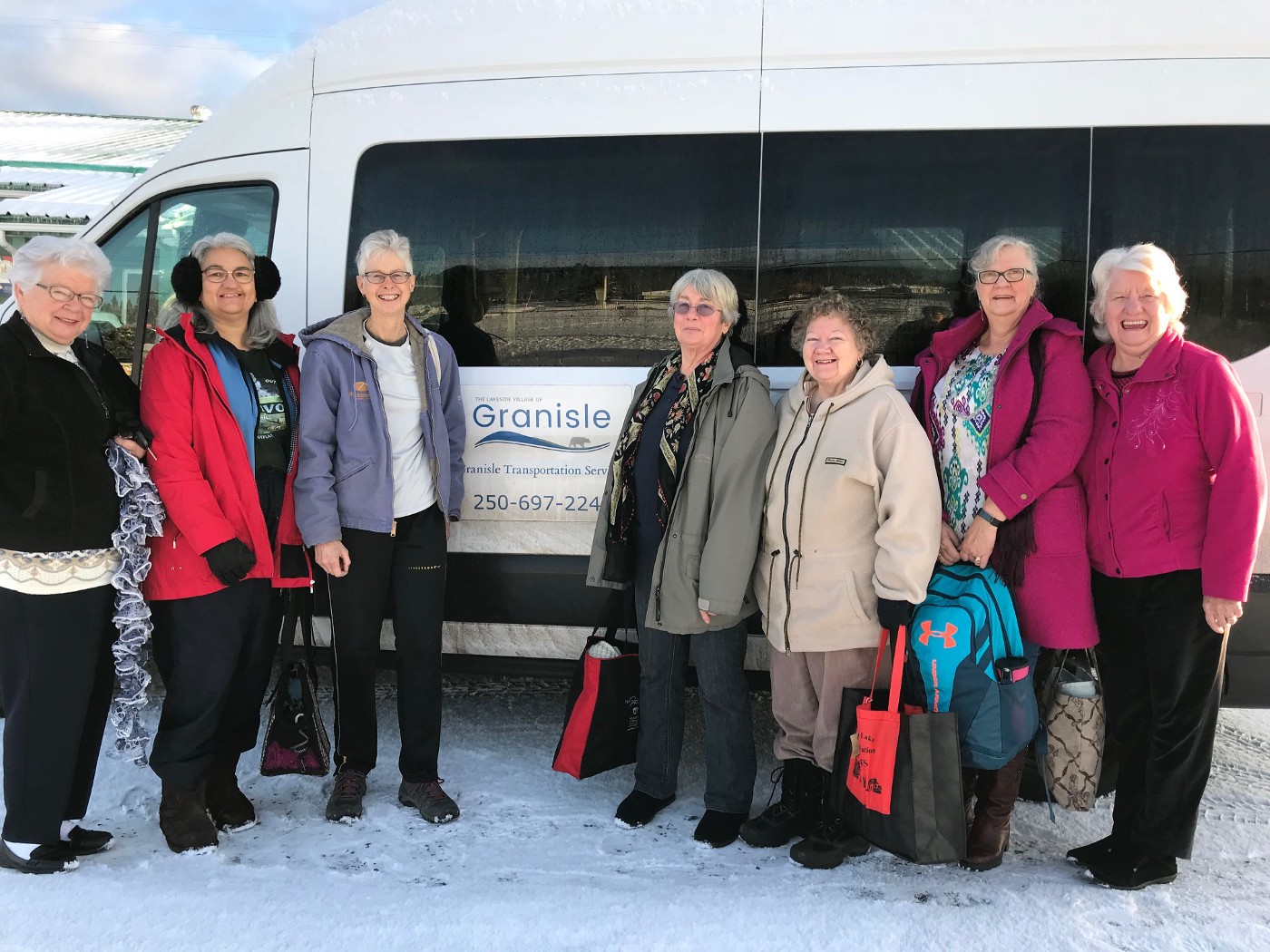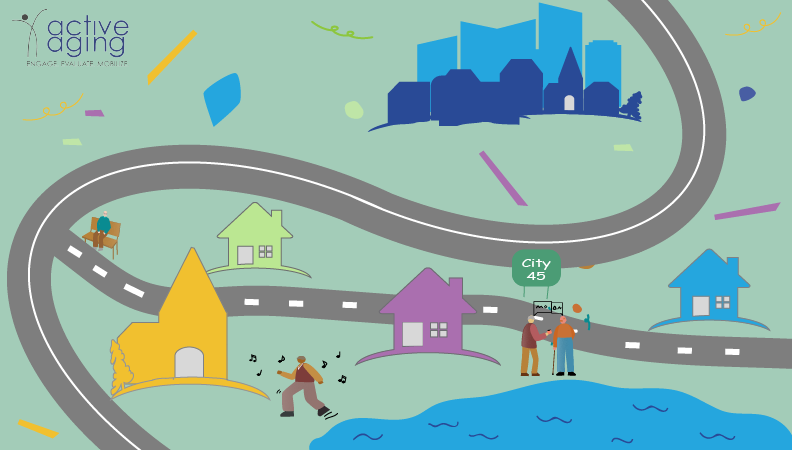Overcoming Transportation Barriers in Rural B.C.
By Caroline MacLennan
What jeopardizes healthy aging, specifically in rural or remote areas?
In many communities across British Columbia, driving is a lifeline for older adults. For many older adults, driving is the primary form of transportation and is a critical tool to support independence, social engagement, and access to health services (Bacsu et al., 2012).
Often, later-in-life changes to physical and cognitive health or social factors prevent us from driving. Unfortunately, when our health, independence and connection rely on the ability to drive, the impact of driving cessation can be severe (Dugan & Lee, 2013). For some older adults, losing the ability to drive safely limits transportation mobility, especially in regions that lack well-developed public transportation systems in rural and remote areas.
We know from our research, and the literature generally, that without adequate public transportation options, older adults who do not drive, but wish to remain socially engaged put themselves at an increased risk of becoming socially isolated (Kotval-K, 2017). While also potentially confining themselves to activities within their immediate neighbourhood (Barnes et al., 2016).
In a Vancouver study conducted by our research team, we found that public transit not only connects older adults to their communities but also contributes meaningfully to their daily physical activity levels (Voss et al., 2016). The walking trips to and from public transit stops or stations had a tremendous impact on daily mobility for the older adult population. However, the question remains, how do we increase access to these transportation opportunities in more communities across our province?
Since no two rural communities are the same, rural transportation solutions require approaches that include context and the input of seniors (Bond et al., 2017). Greater clarity of the complex interactions between people and their travel purpose is necessary to understand transit needs within the neighbourhood and outside of the community (Barnes et al., 2016). Unfortunately, due to the costs involved in providing rural transportation, one researcher commented, “in many instances, political decision-makers are not supportive of providing transportation for non-essential purposes” (Kerschner, 2006). Ultimately, transportation providers that are cognizant of their special conditions regarding density, proximity to urban areas, and rider preferences, particularly those of older adults, will see positive outcomes (Bond et al., 2017).
A glance at community transportation in rural British Columbia:
Granisle is a remote village located in Northern British Columbia, with a population of 303 people (Stats Can, 2016). About 50 percent of people living in this little community are over the age of 65 (Stats Can, 2016). Granisle is too small to offer many core services that keep older adults active and connected. So, when we implemented our Choose to Move model (a free initiative that supports older adults to become and stay more physically active and socially connected) in Granisle, the Activity Coach, Wendy, had to be creative. How could she help the participants, some of whom did not drive, to access core services that were several kilometres away in a larger centre?
Wendy explored opportunities such as facilitating activity buddies to form walking groups within the community. She had the bright idea to organize a ‘field trip’ to the Houston Leisure Centre, a town an hour away, where Choose to Move participants could enjoy a dip in the hot-tub, laps in the swimming pool or exercise sessions in the fitness facility. The key to this field trip was not the destination itself, but rather introducing the participants to the Granisle Community Bus and the journey they enjoyed together.

While this was a one-time trip, Wendy hoped that teaching participants to use the community bus would break down the barrier of fear to use the service, and therefore increase access to many services, activities and social opportunities in the larger community of Houston.
Wendy noted that this trip had a very positive effect on supporting participants’ independence, social connection and physical activity.
The Granisle Community Bus works to provide transportation mobility for seniors living in rural and remote locations, and since this excursion, it has seen an increase in ridership from a couple of Choose to Move participants who use it to access opportunities for physical activity at various Leisure Centres around Granisle.
Community relationships, outreach activities and partnership arrangements are critical ingredients for any transportation service, but particularly one that provides services to seniors (Kerschner, 2006). Without the investment in rural transportation, there is a risk that rural communities will be left isolated, with vulnerable groups undermined if they cannot participate in social, physical and/or cultural services (Social Exclusion Unit, 2003). Additionally, this could lead to a waste of institutional resources due to missed health appointments, and delays in patient discharge from hospitals (Social Exclusion Unit, 2003).
Since 2015, the Active Aging Research Team at the University of British Columbia and the British Columbia Recreation and Parks Association, the United Way of the Lower Mainland, and the YMCA have been working in partnership to deliver Choose to Move in diverse communities, to promote older adult physical activity, social connectedness, independence and health. The Choose to Move program offered by the Village of Granisle is one of many great examples highlighting how this initiative is changing lives.
REFERENCES
Bacsu, J. R., Jeffrey, B., Johnson, S., Martz, D., Novik, N., & Abonyi, S. (2012). Healthy aging in place: Supporting rural seniors’ health needs. Journal of Rural Nursing and Health Care, 12(2), 77–87. Retrieved from https://rnojournal.binghamton.edu/index.php/RNO/article/view/52
Barnes, R., Winters, M., Ste-Marie, N., McKay, H., & Ashe, M. C. (2016). Age and retirement status differences in associations between the built environment and active travel behaviour. Journal of Transport & Health, 3(4), 513–522. doi:10.1016/j.jth.2016.03.003
Bond, M., Brown, J. R., & Wood, J. (2017). Adapting to challenge: Examining older adult transportation in rural communities. Case Studies on Transport Policy, 5(4), 707–715. doi:10.1016/j.cstp.2017.07.004
Dugan, E., & Lee, C. M. (2013). Biopsychosocial risk factors for driving cessation. Journal of Aging and Health, 25(8), 1313–1328. doi:10.1177/0898264313503493
Kerschner, H. (2006). Transportation Innovation for Seniors: A Synopsis of Findings in Rural America. The Beverly Foundation, The Community Transportation Association of America.
Kotval-K, Z. (2017). Transit accessibility for older adults in the Greater Lansing, Michigan region. Quality in Ageing and Older Adults, 18(3), 175–187. doi:10.1108/qaoa-08–2016–0032
Statistics Canada (2016 Census Data). https://www12.statcan.gc.ca/census-recensement/2016/dp-pd/prof/details/page.cfm?Lang=E&Geo1=CSD&Code1=5951032&Geo2=PR&Code2=59&Data=Count&SearchText=Granisle&SearchType=Begins&SearchPR=01&B1=All&GeoLevel=PR&GeoCode=5951032&TABID=1
Social Exclusion Unit. (2003). Making the Connection: Final Report on Transport and Social Exclusion. Retrieved January 23, 2019, from http://www.mtcwatch.com/pdfiles/3819-CO.pdf
Voss C, Sims-Gould J, Ashe MC, McKay HA, Pugh C, Winters M. Public transit use and physical activity in community-dwelling older adults: Combining GPS and accelerometry to assess transportation-related physical activity. J Transp Heal. 2016;3(2):191–199. doi:10.1016/j.jth.2016.02.011.

